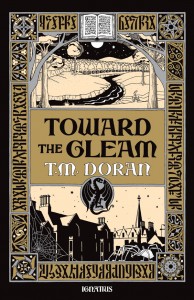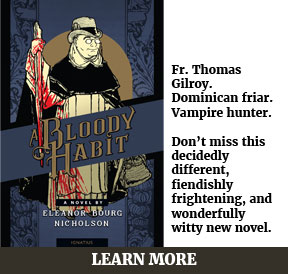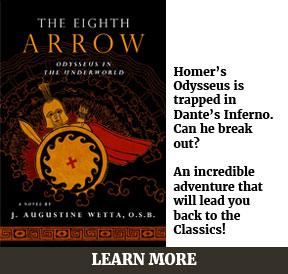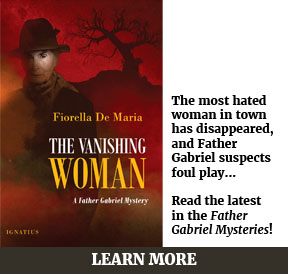I’ve been asked by many how this story came to be. Where did the idea originate? How was the “superstructure” of the story assembled? How long did it take to compose Toward the Gleam?
These questions are asked of many authors about many novels. Some story writing happens so organically that only in retrospect can the experience be described, because it is far more than just work products and dates.
 Some aren’t interested in how the sausage is made, or would rather not know, but for those intrigued by such things, here is the backstory—to the best of my recollection. The short answer I’ve given in interviews and in response to readers’ questions: Toward the Gleam took 20-30 years to compose. In fact, research began long before the idea for the story was conceived, in the sense that the story feeds on paleohistory, the ideologies and emerging science of the 20th century, and 20th century historical characters. Going back to the 1970s, I had a keen interest in these subjects and sought books and articles on philosophical, historical (including paleohistorical), and scientific topics, as well as biographies of remarkable men and women. Some of these works, such as Peter Kreeft’s The Philosophy of Tolkien combined biography and an intense exploration of ideas. Others, such as Martin Gilbert’s biography of Churchill, provided deep insight into their subject. The documentary and literary works of these historical characters themselves, such as Churchill’s A History of the English Speaking Peoples, Chestertons’s The Everlasting Man and Fr. Brown stories, allowed me to hear their ideas and beliefs, along with stylistic nuances, in their own literary voices. Even though only snippets were incorporated into Toward the Gleam, the insight and detail these resources provided made me comfortable—If such a word can be used—transplanting some of the “DNA” of these historical characters into my own characters.
Some aren’t interested in how the sausage is made, or would rather not know, but for those intrigued by such things, here is the backstory—to the best of my recollection. The short answer I’ve given in interviews and in response to readers’ questions: Toward the Gleam took 20-30 years to compose. In fact, research began long before the idea for the story was conceived, in the sense that the story feeds on paleohistory, the ideologies and emerging science of the 20th century, and 20th century historical characters. Going back to the 1970s, I had a keen interest in these subjects and sought books and articles on philosophical, historical (including paleohistorical), and scientific topics, as well as biographies of remarkable men and women. Some of these works, such as Peter Kreeft’s The Philosophy of Tolkien combined biography and an intense exploration of ideas. Others, such as Martin Gilbert’s biography of Churchill, provided deep insight into their subject. The documentary and literary works of these historical characters themselves, such as Churchill’s A History of the English Speaking Peoples, Chestertons’s The Everlasting Man and Fr. Brown stories, allowed me to hear their ideas and beliefs, along with stylistic nuances, in their own literary voices. Even though only snippets were incorporated into Toward the Gleam, the insight and detail these resources provided made me comfortable—If such a word can be used—transplanting some of the “DNA” of these historical characters into my own characters.
In the case of the philosophical questions, I frequently referred to my 4-volume Encyclopedia of Philosophy (not to be tackled after a glass of wine), and to the encyclicals and letters of St. John Paul II. A keen interest in the compatibility and intersection of science and philosophy drew me to Kurt Gödel, Einstein, and Ludwig Wittgenstein. Intellectual struggles abounded; for example, trying to wrap my mind around phenomenology, Gödel’s incompleteness theorem, and Owen Barfield’s concepts of consciousness.
First names and aliases were adopted for the veiled historical characters, not for legal reasons as some have surmised, but to keep some “space” between the historical characters and my own literary characters, to allow me to take these characters places—geographically, behaviorally, psychologically—that differ from the actual historical characters. A prominent example of this “space” is the Stockholm chapter featuring John Hill and Greta Erickson.
I have been reading—and enjoying—mystery stories for decades, and it made sense to re-examine A. C. Doyle, Agatha Christie, and J. D. Carr in regard to the mystery and suspense elements of the story. I love a good mystery and have tried my hand at dozens of short stories (for those interested, you can find “The Deadly Dart Mystery” in an appendix to Terrapin, and “A Legendary Mystery” and “The Yellow Tavern Mystery” on the Ignatius Press site). Toward the Gleam contains two such puzzle plots: the mystery of Sir Richard Hope’s disappearance that Gilbert solves in the September 14, 1931 chapter (a la Fr. Brown), and the puzzle of the vanishing treasures.
I don’t remember the exact day or year of the “Aha” moment, when the foundational idea for the story came to me, but it was around the year 2000, while I was taking a walk. Although I was invigorated by the idea, I was also intimidated by the effort and research that would be necessary to pull off such an audacious concept.
Intense research for the story occurred between 2000 and 2005, or thereabouts. I began to fill up journals with ideas and plot details, everything from specific dialogue to character profiles to themes to scenes/venues, some of which were abandoned as the story progressed. From the start, I committed myself to making the story as plausible as possible, which meant that research needed to be rigorous. Because of my longstanding interest in prehistory, recorded history, philosophy, biography, science—and having many personal library resources for these subjects—I was often able to find helpful books on my shelves when I felt stymied. My training in engineering and science came in handy, as in the many technical subjects where I am far from an expert I was at least able to grasp portions of technical articles.
I don’t remember how many times I’ve read The Lord of the Rings, The Hobbit, The Silmarillion, and The Children of Hurin, along with numerous biographies of Tolkien, Lewis, and Chesterton. Joseph Pearce’s perspective was valuable. Like Kreeft, Pearce explores things that mattered most to these men. T” by Karen Wynn Fonstad was invaluable in tackling the paleogeographical/topographical challenges of the story.
The title of the story came to me after encountering the Tennyson verse that became the story’s epigraph. This verse and Toward the Gleam allude to the Grey Havens as Gandalf, Frodo, and the others prepared to embark for the Blessed Realm, the “gleam” signifying the light that radiates from this glorious land. Likewise, and despite his blind spots, John Hill too was journeying toward the gleam.
The first draft of the story was completed in 2007. I shared the draft with my brother Jim, who was a frank, and encouraging, critic. Many early Saturday mornings we circled the park talking about the story.
Toward the Gleam was submitted to Ignatius Press in the summer of 2009 and published in 2011. It’s more than mere convention to affirm that John Herreid’s and Daniel Mitsui’s cover art, Vivian Dudro’s deft editorial hand, Enrique Aguilar’s video trailer for the book, and Kevin O’Brien’s audio presentation enhanced many readers’ experience of the story.
When I embarked on Toward the Gleam, I set out to try my hand at a suspenseful, complex, mysterious, idea-packed story that I would enjoy composing and readers would enjoy reading. To paraphrase another author, Toward the Gleam may not be as good as it could have been, but it is probably as good as I could make it. Ray Bradbury once said, “Everything I’ve done is a surprise. I sometimes get up at night when I can’t sleep and walk down into my library and open one of my books and read a paragraph and say, ‘My God, did I write that? Did I write that?, because it’s still a surprise.” Tolkien had a similar sense of being “surprised” by The Lord of the Rings. So do I.
Recently, my wife said that she never tires of hearing about hobbits—we were listening to the audio version of The Lord of the Rings—and I responded that this is because she is hobbit-like, always expecting and seeking the best, even in dark times and places. As for me—alas—I am more like Boromir, or even Turin, trying to “fix” things according to my own lights.
Notwithstanding the story’s and its author’s flaws, I have seen my Oliphaunt, and am grateful for it.






Kelleen Osberger
June 20, 2014 at 9:10 am
I enjoyed your book immensely! It became one of those books that you wish the story would not end!
T. M. Doran
June 20, 2014 at 11:01 am
Thank you for the kind words, Kelleen
James Mauer
June 23, 2014 at 3:18 pm
I enjoyed your book a lot as well. It was fun, dangerous, mysterious and exciting. Shared it with friends and family, who also.appreciated it. Thanks for writing your book and putting it out there!
T. M. Doran
July 12, 2014 at 7:40 pm
And thank you, James. “Toward the Gleam” was a labor of love.